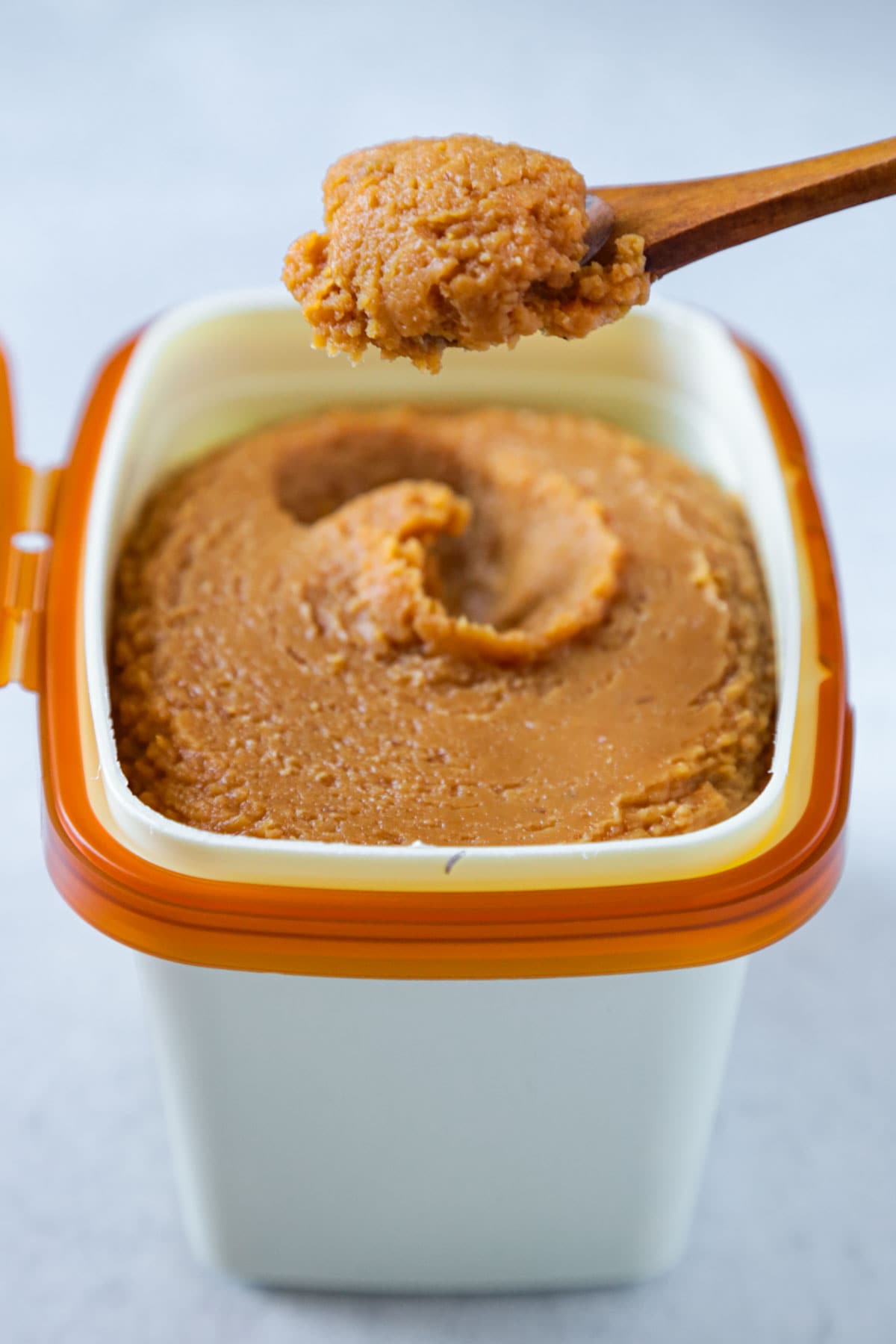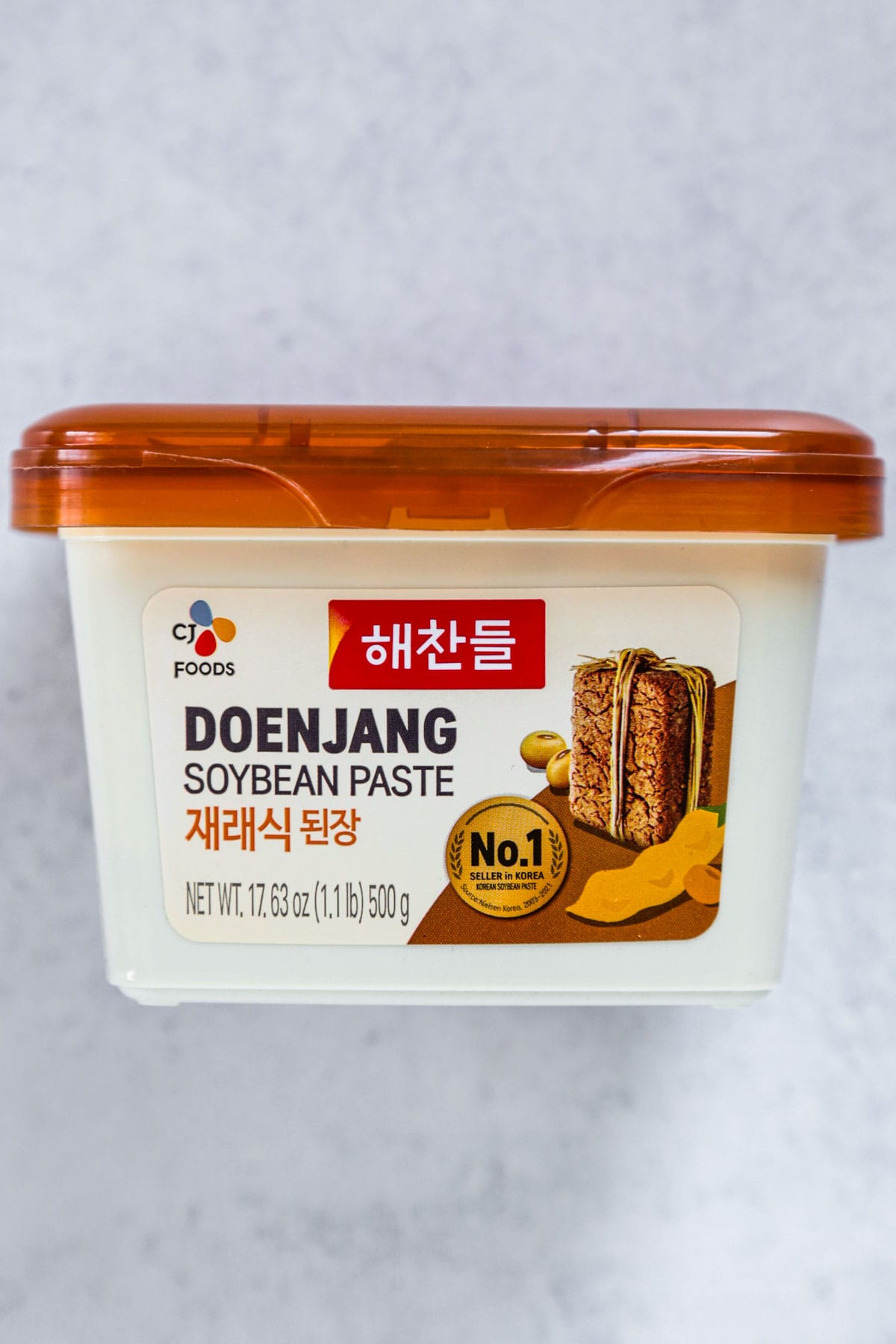
Table of Contents
What is Doenjang
Doenjang is a thick brown paste made from fermented soybeans and salt, used predominantely in Korean cooking. It has a funky, rich, nutty, umami flavor – and an appearance similar to chunky peanut butter. But don’t let the looks fool you! Doenjang is a powerful ingredient, and even a small amount can impart big time flavor.
It’s used in soups, stews, and marinades – and is absolutely essential when making ssamjang. Think of doenjang as a cousin to miso paste, albeit saltier and deeper in flavor.
Doenjang develops a funky texture and umami flavors during the fermentation process. After grinding down soybeans, a thick paste is formed into blocks. Since the process starts with a dry fermentation and then moves on to a liquid, it can take anywhere from six weeks to years to ferment a batch of doenjang.

How to Use Doenjang
Doenjang is a staple ingredient in Korean cooking. The paste can be added directly to sauces, soups, stews, dips, and condiments to add a deep, rich, umami flavor.
This paste is famously used in doenjang jjigae, a hearty and smoky Korean soup with tofu and a mix of vegetables.
Cooking With Korean Soybean Paste
Because of its assertive flavor, doenjang does a lot of the heavy lifting when making your favorite Korean recipes. A little goes a long way. Even a couple tablespoons can add a rich, savory flavor. Here are a few of my favorites.
Where to Buy
Check out your local Korean market – or look in the Asian section of your neighborhood supermarket for Korean soybean paste. If all else fails, it’s fairly easy to purchase doenjang online these days.

Storage
Doenjang should be kept in the refrigerator. For best results, keep the paste in an airtight container. When stored properly, this fermented food can have a shelf life of up to one year.
Substitute For Doenjang
If you can’t find doenjang, use awase miso paste instead.
While it’s not quite as funky as doenjang, Japanese awase miso is made with a combination of red and white miso paste. It works in a pinch – and still delivers on many of the the earthy and umami elements. Read all about miso paste here.
Frequently Asked Questions
In theory, yes. In practice: not always. Many brands of Korean soybean paste are gluten-free. However, some brands incorporate wheat into the final product. So, as always, be sure to read the ingredients label if you are gluten intolerant.
While the two pastes share many similarities in color and taste, they are not the same. Miso, which is Japanese in origin, has a much shorter fermentation process due to the use of a koji starter. It has a smoother flavor that isn’t quite as deep and full of umami as doenjang.














